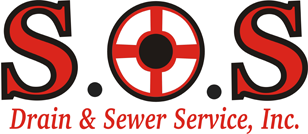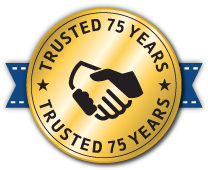Tree roots are a common cause of sewer line damage. The roots of trees and other plants are naturally drawn to the moisture and nutrients found in sewer lines, making them a prime target for growth. As these roots continue to grow, they can cause blockages and cracks in your sewer pipes, leading to costly repairs and potential health hazards.
In this article, we will discuss the various ways that tree roots can damage your sewer line and how you can prevent or stop them from causing further harm. We will also explore different methods for repairing any existing damage caused by tree roots and offer tips on maintaining healthy sewer pipes for years to come.
So if you have trees near your property or are experiencing issues with your sewer line, keep reading to learn more about this common problem and how you can effectively address it.
Why Tree Roots Target Sewer Lines
Tree roots are naturally attracted to moisture, making sewer lines a prime target. Roots instinctively grow toward water and nutrient sources to support the tree’s health, and sewer lines often provide both.
Moisture from leaks or condensation on the exterior of pipes creates an environment that draws roots toward the area. Over time, tree roots detect these sources and begin to infiltrate in search of sustenance.
Even small cracks or weak points in aging or damaged sewer pipes can serve as entry points for roots. Once inside, the roots continue to grow, exploiting these openings and expanding with significant force. This infiltration can lead to severe blockages or damage to the pipes, escalating what might initially seem like a minor issue into a costly and complex repair.
Signs of Tree Root Damage in Sewer Lines
Slow Drains
A gradual reduction in the flow of water in sinks, tubs, or toilets could indicate tree roots partially blocking the sewer lines.
Frequent Clogs
Recurring blockages, even after regular cleaning, may suggest an underlying issue like tree root intrusion in your pipes.
Gurgling Noises
Unusual sounds coming from drains or toilets often point to restricted water flow caused by root growth.
Sewage Backups
Tree roots can cause wastewater to back up into your home, creating a messy and unpleasant situation.
Lush Patches in Your Yard
Unusually green or fast-growing grass above sewer lines might be a sign of leaking water enriched by root infiltration.
Foul Odors
Persistent sewage smells around your property could indicate significant root-related damage in the sewer system.
How Tree Roots Impact Sewer Lines
Tree roots can damage sewer lines by physically intruding into small cracks or joints in the pipes, gradually causing significant blockages. Over time, the pressure exerted by expanding roots can widen these cracks or even break the pipes entirely, compromising the structural integrity of the system.
In more severe cases, roots can form dense, tangled masses within the pipes, resulting in complete blockages that obstruct proper water flow. If not addressed promptly, root-related damage can worsen, leading to costly repairs or the potential need for full pipe replacements.
Regular inspections and proactive maintenance are critical to mitigating these risks and preventing the long-term expenses associated with untreated root intrusion.
How to Stop Tree Roots from Damaging Sewer Lines
Now you know the signs of root intrusion and the potential consequences, but how can you stop tree roots from damaging your sewer lines in the first place? There are several steps you can take to prevent this issue from occurring.
1. Regular Inspections
Scheduling regular plumbing inspections—especially if you live in an older home or have large trees near your property—helps catch root intrusion early. A professional plumber can use a sewer camera to check for cracks, blockages, or signs of root growth inside the pipes before they become a major problem.
Early detection allows for small repairs and root removal before significant damage occurs. Inspections should be done every 1–2 years, or more frequently if you’ve experienced previous root-related issues. Proactive monitoring can save thousands of dollars by avoiding emergency excavations or full pipe replacements caused by unchecked root growth.
2. Root Barriers
Installing physical or chemical root barriers is an effective way to stop roots from reaching sewer lines. These barriers are placed underground between trees and pipes to redirect root growth away from sensitive areas. They can be made of plastic, metal, or herbicide-infused fabrics depending on your needs.
Root barriers are especially useful for newly planted trees or when repairing damaged sewer lines. When properly installed, they offer long-term protection without harming the tree. Consulting with a landscaping or plumbing professional ensures the barrier is placed at the correct depth and distance for maximum effectiveness.
3. Pipe Relining or Replacement
Damaged or older clay or cast-iron pipes are more susceptible to root intrusion. In these cases, trenchless pipe relining or full pipe replacement may be the most effective long-term solution. Relining involves inserting a resin-coated liner into the existing pipe, which hardens to form a root-resistant seal.
This method is minimally invasive, doesn’t require digging up your yard, and restores structural integrity while preventing future root intrusion. For severely compromised pipes, replacement with modern PVC or HDPE piping may be necessary. These materials are more durable, leak-resistant, and less likely to attract root growth.
4. Chemical Root Treatments
Applying a foaming root control solution, such as copper sulfate or a foaming herbicide, can kill small roots growing inside your sewer lines without harming the tree. These treatments are typically flushed into the line and foam on contact, coating the pipe walls and killing roots over time.
This solution is best used as a preventative measure or after mechanical root removal to delay regrowth. However, it should be applied by a licensed professional and used carefully, as improper use can harm surrounding vegetation or contaminate soil. When applied correctly, it offers an affordable and non-invasive deterrent to recurring root intrusion.
5. Strategic Tree Planting
If you’re planning new landscaping, be strategic about where you plant trees. Choose locations well away from underground utilities, and use slow-growing, low-root-impact species when planting near your home. Trees with aggressive root systems—like willows, poplars, and maples—should be placed far from sewer lines.
Before planting, request a utility locate service to mark underground sewer routes. Knowing where your pipes are lets you plan safely and avoid costly mistakes. Smart tree placement now prevents root intrusion years down the line and saves on future repair and maintenance costs.
6. Proper Disposal of Grease and Food Waste
Roots are naturally drawn to moisture and nutrients, and a buildup of grease, food waste, or debris inside pipes acts as a magnet. Never pour grease down the drain or flush food scraps that can harden and catch debris. This creates ideal conditions for roots to thrive and enter the line.
Use strainers in kitchen sinks, dispose of food scraps in the trash or compost bin, and clean your drains regularly with enzyme-based cleaners. Keeping your pipes clean not only prevents clogs—it makes the sewer system less attractive to root growth in the first place.
7. Avoid Planting Trees Near Sewer Lines
One of the simplest ways to prevent root intrusion is to avoid planting trees near sewer lines altogether. While it may not always be possible in urban or landscaped environments, distance is your best defense. As a general rule, plant trees at least 10–20 feet away from sewer lines.
If you’re unsure of pipe locations, call 811 or your local utility marking service before digging. This not only protects sewer infrastructure—it’s also the law in many regions. Making informed landscaping decisions is a small effort that protects your plumbing system and saves you from major repair costs later.
When to Call a Professional
If you’re experiencing persistent clogs, frequent backups, or other recurring sewer issues, it may be time to call a professional. Visible signs such as soggy patches in your yard, foul odors, or cracks in your sewer system can also indicate significant root damage.
Professionals have access to advanced tools like hydro jetting, which uses high-pressure water to clear roots and debris, and trenchless pipe repair methods that fix damage with minimal disruption to your property. Their expertise in diagnosing root-related problems ensures the right solution is implemented quickly and effectively.
Attempting to address severe issues on your own can lead to further complications, so turn to skilled professionals when these signs arise to protect your plumbing system and prevent costly repairs.
Keep Your Sewer Lines Flowing with S.O.S Drain & Sewer
Don’t stress—S.O.S Drain & Sewer has your back! Serving Minneapolis, St. Paul, and the Twin Cities for over 75 years, we’re your trusted experts in keeping sewer lines clear and your home or business protected.
Our highly skilled technicians use cutting-edge tools like high-pressure hydro jetting and precision optic inspections to tackle even the toughest clogs, frozen pipes, and sewer blockages. Family-owned and operated, we’re all about honesty—with upfront pricing, no hidden fees, and an A+ rating from the BBB to prove it.
But we don’t just stop at cleaning. We offer preventative maintenance programs to keep your drains problem-free and emergency services for those unexpected disasters. Fast, reliable, and affordable—that’s the S.O.S promise.
Ready for stress-free plumbing? Contact us today!
FAQs
What are the earliest signs of tree roots clogging sewer line pipes?
The earliest signs include slow drains, standing water, or unusual gurgling sounds from the sewage pipe. These warning signs often indicate roots in sewer pipelines causing a partial or complete blockage, which can lead to further damage if left untreated.
How can tree roots cause damage to underground pipes?
Tree roots can infiltrate through tiny cracks in clay pipes or modern sewer pipes, exerting too much pressure on sewer line pipes and causing a damaged pipe. Roots in your sewer can also trap other debris, worsening blockage problems and potentially affecting other structures.
What are some cost effective solutions to avoid tree roots in your sewer line?
To avoid tree roots causing sewer problems, use copper sulfate treatments available at your local hardware store or schedule regular drain cleaning. A sewer camera inspection can help locate the root problem early, offering a lasting solution before more damage occurs.
When is sewer line repair necessary for tree root issues?
If roots in your sewer have caused a completely blocked pipe or severe damage to the main sewer line or sewer lateral, sewer line repair may be the only lasting solution. Ignoring the root problem may lead to costly plumbing problems, making permanent solutions and insurance policy reviews essential.








